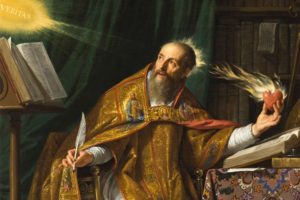It’s a woman’s prerogative to change her mind, and it’s a theologian’s prerogative to make distinctions. Seminaries train us this way, and it’s the currency with which we trade in ministry. Few excel in formulating and articulating such subtleties as theologians on the Catholic side of the ecclesial fence, and the mystery of the Mass is a place where this tendency is particularly observed.
As a “mystery,” the Catholic Mass is by definition beyond human comprehension; yet, when Protestants explain what occurs in the Mass, we often get it wrong, propagating misnomers that directly contradict the explicit teaching of the Roman Catholic Church. Here are the big three. If effectiveness in gospel witness is related to upholding truth and avoiding straw men, these lessons should be noted.
Misnomer One: Catholics teach that Christ is “physically present” in the Mass.
When describing Jesus Christ as the Eucharist, Catholics will say that the Lord is “really,” “truly,” “wholly,” “continuously,” or “substantially” present, but not “physically.” To state the Jesus is “physically” present is to suggest that he is present “locally” (as he is now in heaven at the right hand of the Father). The Eucharistic presence of Christ, although understood as no less real, is sacramentally present in the transubstantiated host. From the Catechism of the Catholic Church:
1413 By the consecration the transubstantiation of the bread and wine into the Body and Blood of Christ is brought about. Under the consecrated species of bread and wine Christ himself, living and glorious, is present in a true, real, and substantial manner: his Body and his Blood, with his soul and his divinity (cf. Council of Trent: DS 1640; 1651).
Misnomer Two: Catholics teach that Christ is Re-sacrificed at the Mass.
This is perhaps the most common misconception. If I had a dime for every pastor friend whom I’ve heard say that the Mass is a repetition of the cross, I just might have enough money for a cappuccino at Starbucks. It is permissible to say that the Mass is a repetition of the Last Supper, but not of Jesus’ cross. Catholic doctrine teaches that the Mass “renews” or “re-presents” the cross; but it doesn’t “repeat” it. Catholics assert that in a mystical and sacramental sense, the Mass is the cross, the once and for all offering of God’s Son continued through time. For those of you who enjoy grammar, it’s like an ingressive aorist: an action that has been completed and is also ongoing. It is, if you will, like a golf put. Please pardon the comparison of the supremely glorious cross with the banality of golf, but his is how my simple mind gets around it. When I swing my putter at the ball, the initial contact is the “put.” At the same time, the action of the ball rolling toward the pin (and in my case, past the pin) is also the “put.” The put has happened and it’s happening. So the sacrifice of Jesus is completed (hence informed Catholics know how to explain Jesus’ words “it is finished”) and it is also ongoing. Personally, this is one of two or three tenets of Catholicism that I find most troubling; but it is what it is, and we evangelicals only benefit from getting it right. Again, from the Catechism:
1407 The Eucharist is the heart and the summit of the Church’s life, for in it Christ associates his Church and all her members with his sacrifice of praise and thanksgiving offered once for all on the cross to his Father; by this sacrifice he pours out the graces of salvation on his Body which is the Church.
Misnomer Three: Catholics teach that Christ Dies at the Mass.
This misunderstanding is a close second to the preceding. If one regards the Mass as a re-sacrifice, then, logically, he will view that sacrifice as constituting another death. However, according to the Catholic Church, Christ doesn’t “die” in the Mass, he is “immolated.” For some Protestants that will be a new term. “Immolation” comes from the Latin immolare, “to sacrifice.” Simply put, in the Mass, when the priest elevates the wafer and recites the words of consecration, Jesus is presented in a state of victimhood. In other words, he is presented in his death.
1366 The Eucharist is thus a sacrifice because it re-presents (makes present) the sacrifice of the cross, because it is its memorial and because it applies its fruit:
- [Christ], our Lord and God, was once and for all to offer himself to God the Father by his death on the altar of the cross, to accomplish there an everlasting redemption. But because his priesthood was not to end with his death, at the Last Supper “on the night when he was betrayed,” [he wanted] to leave to his beloved spouse the Church a visible sacrifice (as the nature of man demands) by which the bloody sacrifice which he was to accomplish once for all on the cross would be re-presented, its memory perpetuated until the end of the world, and its salutary power be applied to the forgiveness of the sins we daily commit.
The implications of the above are numerous. For one, in light of numbers two and three, it explains why Catholics display the crucifix—the dead Jesus upon the cross. It also highlights how different is the Catholic and Protestant understanding of propitiation (the way God’s wrath is appeased). One might argue that this issue of the Eucharistic sacrifice of Christ is a more substantial difference between Catholics and Protestants than our disagreement over the relationship between faith and works.
For the sake of clear communication (and gospel witness), we want to use the proper terms. You know that feeling you get when you hear an adversary of Protestantism reduce the doctrine of faith alone to mere cheap grace (i.e., walk an aisle, say a prayer, be an antinomian slug…)? It’s inaccurate, unfair, and your respect for such a person’s argument is naturally diminished. Well, this is essentially what happens when we misrepresent the Mass. Fruitful gospel conversations require us to get the details straight.
And while we’re on the subject of details, let us praise God for the truth of Hebrews 10:12: “But when Christ had offered for all time a single sacrifice for sins, he sat down at the right hand of God.”

![eucaristia[1] eucaristia[1]](http://chriscastaldo.com/wp-content/uploads/2012/01/eucaristia1_thumb.jpg)



